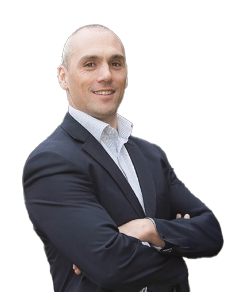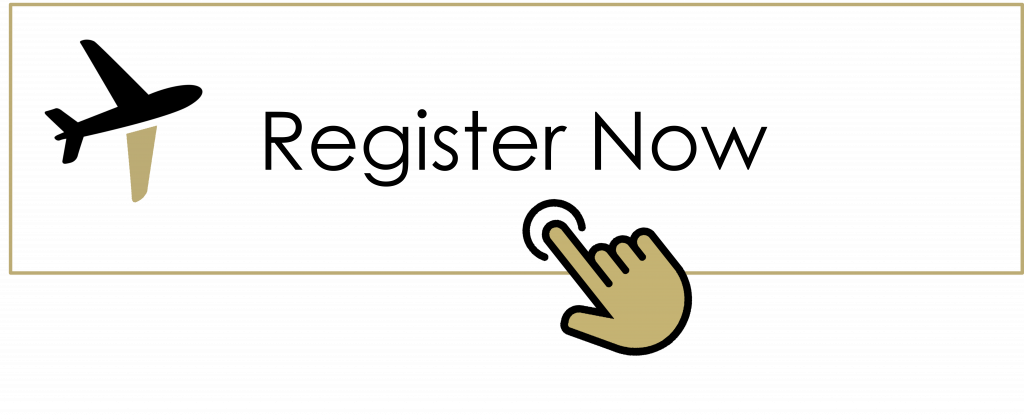- Conference – April 10th 2025 : Dream Big ConsultingBuy your tickets
At château de thégra (62 Rte de Gauré, 31130 Balma), 6:30 pm to 10:30 pm
Creating a startup, growing it and successfully exiting it is a journey fraught with pitfalls, learning and strategic challenges. Thomas Binant, founder of Geotrend, will share his entrepreneurial experience, from the initial idea to the resale of his company in 2023. Through an authentic and concrete testimonial, he will plunge into the heart of the major issues involved in developing an AI startup.
● The business intelligence solution: how a startup changes the market.
● Complex sales method: how to convince large companies to adopt an innovative solution.
● AI-based solution: how to overcome all objections.
● The keys to successful fund-raising: how to make a success of your fund-raising?
● Preparing your exit: how to avoid stumbling on the last step of the entrepreneurial adventure.
With a pragmatic approach illustrated by anecdotes from his own experience, Thomas Binant will deliver actionable advice and valuable lessons for all those wishing to build and enhance the value of their business. An inspiring, unfiltered look back at his experiences, aimed at those who aspire to undertake and succeed in the demanding world of technology startups.
- Conference – March 6th 2025:The connected aircraft revolution
The connected aircraft revolution
Buy your ticket
Air formation, Blagnac (14 Av. Escadrille Normandie Niemen, 31700 Blagnac), 6.30 to 10.30 PM
The satcom technologies are progressing quickly. The aircraft on-board terminal technologies are doing significant steps in terms of compactness, weight, safety and quality of content.
The new satcom technologies open up new functionalities, like the precision in location of the aircraft or the ability to send data and messages in a highly reliable and highly secure frame.
These new functionalities enable the aircraft to communicate formally via a secured internet protocol, or to engage into trajectory optimisation schemes – as two examples among many others.
As a consequence the air transport will substantially reduce fuel consumption while increasing significantly the quality and safety of data exchanged between the aircraft and its environment, reducing pilot workload and improving aircraft operations.
And this is only the beginning of a new era !
With Nicolas Bonleux,Vice-President of Business Line Thales Aerospace Communications
Thales
- Conference – March 20th, 2025: The potential of Artificial Intelligence in the world of Aerospace By EXPLEO
The potential of Artificial Intelligence
Buy your tickets
Air formation, Blagnac (14 Av. Escadrille Normandie Niemen, 31700 Blagnac), 6:30 pm to 10:30 pm
Dive into the future of industry with EXPLEO at our exclusive conference on Artificial Intelligence.
- Discover how AI is transforming industrial processes, improving operational efficiency and opening up new vistas of innovation.
- Join us for captivating presentations, live demonstrations and in-depth discussions with world-renowned experts.
Don’t miss this unique opportunity to understand how AI can propel your business to new heights.
Speakers
Thomas Benoist
Head of Sales – DigitalThomas Berthelot
Solution Architect – Airbus Digital Account Manager - Conference May 16th 2025 – What new energies for tomorrow’s aviation?Booking
The aviation industry is facing a major challenge to reduce its greenhouse gas emissions and achieve net-zero carbon by 2050. To meet this goal, new and sustainable sources of energy are needed to power the future of flight.
In this conference, you will learn about the latest developments and innovations in alternative aviation fuels, such as sustainable aviation fuels (SAF), hydrogen, and electricity.
You will also hear from leading experts and stakeholders who will share their insights and experiences on how to overcome the technical, economic, and regulatory barriers to the adoption and deployment of these new energies for tomorrow’s aviation.
When? May 16th, from 6.30 To 10.30 PM
Where? Air Formation, 14 Av. Escadrille Normandie Niemen, 31700 Blagnac
Speakers: TSE, Turkish Airlines, Lhyfe
Turkish Airlines, the flag carrier airline of the Republic of Türkiye, has taken its place among the largest airline companies in the world with its rapid growth trend since its foundation in 1933, with the objective of carrying out domestic and international passenger and cargo air transportation activities. As the airline that flies to more countries than any other airline in the world, Turkish Airlines currently has a network of 370 destinations in 130 countries with its 454 aircraft fleet.
This huge network and operations make efficient energy practices inevitable. The company is at the forefront of embracing new energies to propel the aviation industry towards sustainability. With a commitment to reducing carbon emissions and embracing cleaner technologies, the airline is actively exploring innovative solutions.
The speaker Mehmet Asik, Turkish Airlines Toulouse and Bordeaux offices Director will give us a picture of new aviation energies within the Airline.
Mehmet Aşık is experienced with ten years in aviation and two years in banking. With six and half years dedicated to working in Africa and one and half years in France, Mehmet has honed his skills in management, sales&marketing and operations in aviation. He holds an MBA degree and a Bachelor’s in Public Administration, leveraging his multidisciplinary education to drive success in his career. As a sales manager for two years then a director since 2018, Mehmet’s leadership, integrity, and commitment to excellence continue to drive his professional journey.
We are pleased to receive also Frédéric Naudi Key Account Manager Industry at Lhyfe.
He will make a presentation of Lhyfe, independent European producer of green and renewable hydrogen, the benefits of green and renewable hydrogen in aviation, for what uses and in what form.Lhyfe is a European group dedicated to the energy transition, producer and supplier of green and renewable hydrogen. Its production sites and portfolio of projects aim to provide access to green, renewable hydrogen in industrial quantities, and to enter a virtuous energy model enabling the decarbonization of entire sectors of industry and mobility.
In 2021, Lhyfe inaugurated the world’s 1st industrial green hydrogen production site directly connected to a wind farm. In 2022, the company inaugurated the world’s 1st pilot platform for the production of green hydrogen at sea. In 2023, it inaugurated its second and third sites, and has several sites under construction or extension across Europe.
Lhyfe is present in 12 European countries and had 195 employees at the end of December 2023. The company is listed on the Euronext Paris stock exchange.
Throughout his career in industry (Bertin Energie Process Environnement, now Naldeo Technologies et Industries, Linde France, Burton Corblin…), Frédéric Naudi has specialized in innovation and supporting major industrial projects towards the energy transition. The use of green hydrogen to decarbonize industry and mobility is a subject he has been following for several years, and for which he joined Lhyfe in 2023.
Aviation faces a major environmental challenge since it is four times as polluting as a high-speed rail in emissions per seat-km over short-haul routes, it accounts for 3% of global CO2 emissions, it has an additional climatic impact via the release of nitrogen oxides, water vapour, and sulphate and soot particles at high altitudes. While aviation has become more and more fuel-efficient overtime, it is the fastest-growing sources of GHG because of the growth of demand.
With respect to the urgency of fighting climate changes, technological solutions are yet far away, and in any cases require large investment which need to be financed.
Only economic measures to fight GHG emissions are available in the short and medium run. There are a wide set of policies ranging from restricting the number of flights (bans, curfew) to market-based measures that will rise the costs of airlines and passengers. What are their relative efficiency and effectiveness for the defense of the common good?
This will be presented by Marc IVALDI.
Marc Ivaldi is Professor of Economics at the Toulouse School of Economics (TSE) and at the Ecole des Hautes Etudes en Sciences Sociales (EHESS). He is President of the French Association of Transport Economics (AFET) and Conference Director of the World Conference on Transport Research 2026. He is a member of the Steering Committee of the Institute for Sustainable Aviation (ISA) and member of the Scientific Committee of the Société des Grands Projets (SGP). He is an expert in the use of empirical and quantitative methods for competition and regulation policy and has advised firms as well as public authorities on a wide range of issues in industrial organization. Much of his research work has been devoted to the analysis of network and transport service industries. He holds a PhD in Economics of the University of Pennsylvania and a PhD in Economics of the Université des Sciences Sociales of Toulouse.
#Newenergiesforaviation #environmentalchallenges #CO2emissions #aviationfuels #ToulouseSchoolofEconomics #transport #sustainableaviation #newenergies #aviation #turkishairlines #sustainability #lhyfeRegistrations: contact@excellenceclubaerospace.com
- POSTPONED to September 22, 2022
POSTPONED to September 22, 2022 | 7:30 pm to 22:45 pm
On Thursday, September 22,2022, experts in Artificial Intelligence will speak on a theme highlighting production, maintenance and piloting solutions linked to Artificial Intelligence.
Why to participate?
This conference is for professionals only
- An opportunity to learn new knowledge
- The opportunity to exchange with the participants to consolidate your and enrich your address book;


Subject to change, we have planned
Conference program 2022
March 15: Corporate Social Responsibility, the challenges of sustainable development
Business Management
April 19: Industry MRO special / Predictive maintenance
June 23: Aerospace training: the universities and talents of tomorrow
June 28: “CSR and Sustainable Management” in Paris
July 5: Connectivity and space
October 4: Excellence Club Aerospace Awards
December 6: new planes and engines
Contact us: 33 (0) 6 48 23 76 65
